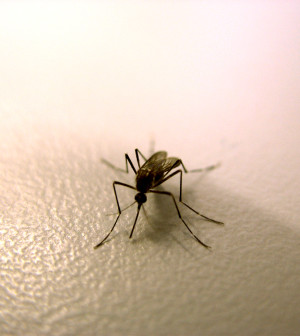- Navigating Your Midlife Crisis: Embracing New Possibilities
- City Raccoons Showing Signs of Domestication
- Mapping the Exposome: Science Broadens Focus to Environmental Disease Triggers
- One Week Less on Social Media Linked to Better Mental Health
- Your Brain Changes in Stages as You Age, Study Finds
- Some Suicide Victims Show No Typical Warning Signs, Study Finds
- ByHeart Formula Faces Lawsuits After Babies Sickened With Botulism
- Switch to Vegan Diet Could Cut Your Greenhouse Gas Emissions in Half
- Regular Bedtime Does Wonders for Blood Pressure
- Dining Alone Could Mean Worse Nutrition for Seniors
Mummy of 17th Century Child May Alter the History of Smallpox

A mummy of a child who lived in the 1600s in Lithuania could offer new insight into how smallpox developed over the millennia.
Researchers say they’ve found the oldest known sample of the virus that causes smallpox in the child. The child’s remains were discovered in a crypt under a church, the authors report in the Dec. 8 issue of Current Biology.
“There have been signs that Egyptian mummies that are 3,000 to 4,000 years old have pockmarked scarring that have been interpreted as cases of smallpox,” study first author Ana Duggan, a postdoctoral fellow at the McMaster University Ancient DNA Center in Canada, said in a journal news release.
“The new discoveries really throw those findings into question, and they suggest that the timeline of smallpox in human populations might be incorrect,” Duggan said.
Researchers found the virus, known as variola, in DNA from the child’s skin. Testing suggests that the strain of the virus found in the child is the same one that appeared in samples from the mid-1900s and the late 1970s.
The researchers think the samples share a viral link dating back to the years 1588-1645, when world exploration spread smallpox across the planet.
“So now that we have a timeline, we have to ask whether the earlier documented historical evidence of smallpox, which goes back to Ramses V and includes everything up to the 1500s, is real,” said study co-author Hendrik Poinar. He’s the director of the Ancient DNA Center at McMaster University in Canada.
“Are these indeed real cases of smallpox, or are these misidentifications, which we know is very easy to do, because it is likely possible to mistake smallpox for chicken pox and measles,” he said.
Another member of the research team put it this way.
“Now we know all the evolution of the sampled strains dates from 1650, but we still don’t know when smallpox first appeared in humans, and we don’t know what animal it came from, and we don’t know that because we don’t have any older historical samples to work with,” said study co-author Edward Holmes, a professor at the University of Sydney in Australia. “So this does put a new perspective on this very important disease.”
More information
For more about smallpox, try the U.S. Centers for Disease Control and Prevention.
Source: HealthDay
Copyright © 2025 HealthDay. All rights reserved.










